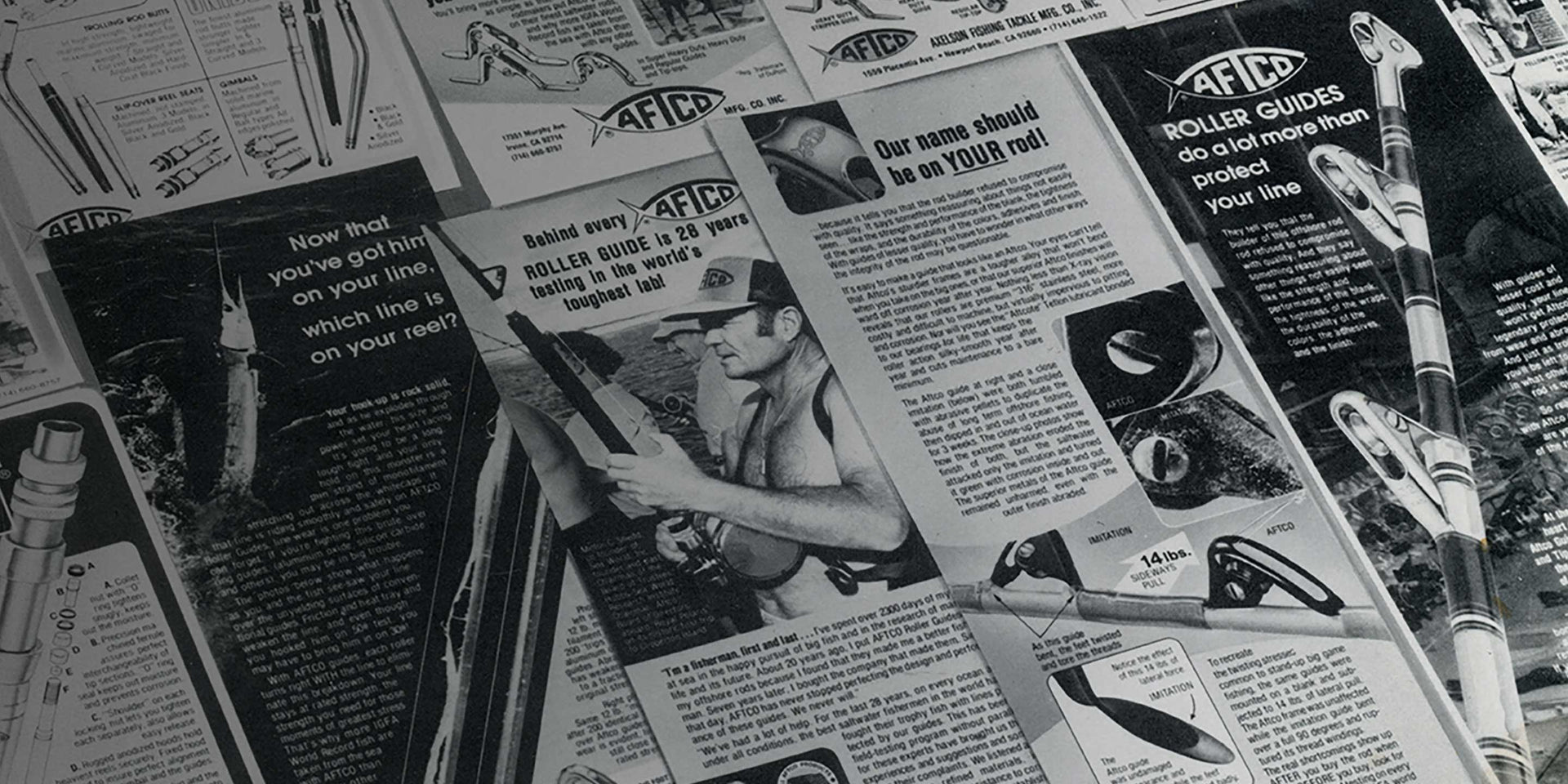
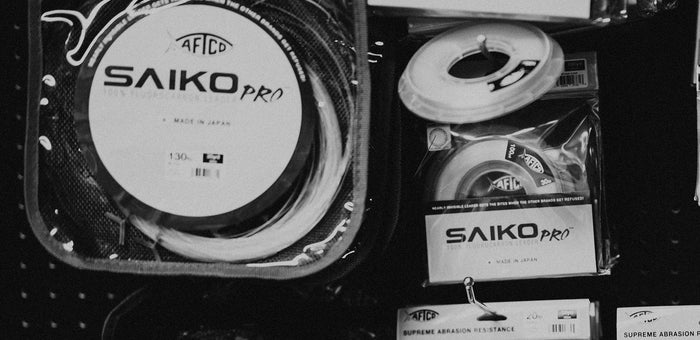
Our History
Since 1958, the world's leading saltwater anglers have relied on AFTCO fishing rod components and tackle accessories for consistently dependable flawless performance.
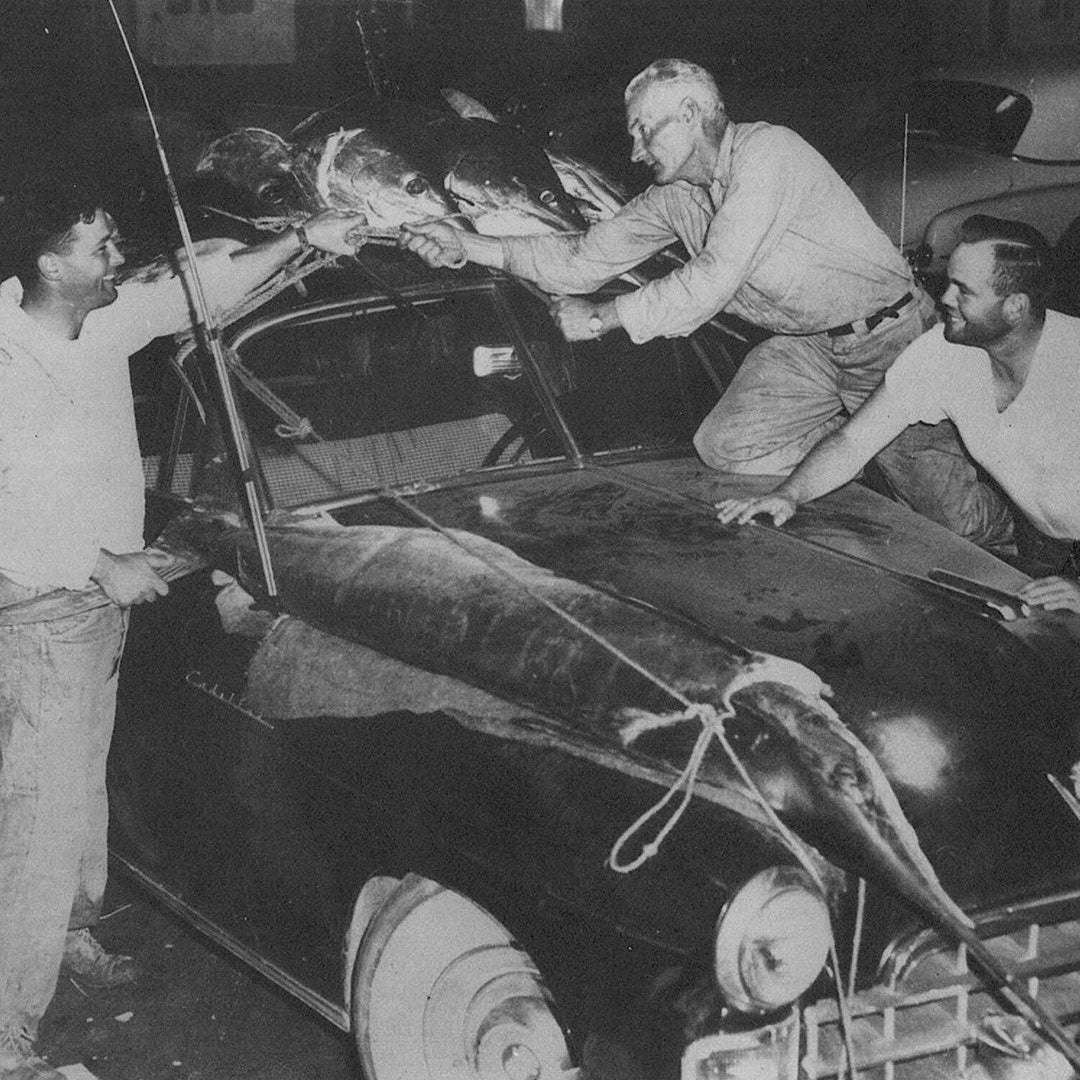
1952: Milt Shedd & Friends Use Live Bait for the First Time to Catch Marlin
Prior to 1952, the conventional way to catch striped marlin in Southern California was to troll dead flying fish on the surface. For Milt Shedd, one of the real thrills in fishing was figuring out a better way to catch them. While cleaning marlin to smoke, he often noticed mackerel, sardines, anchovies, and more in their stomach, but rarely did he find flying fish. He figured if he could cast a live mackerel by a tailing or sleeping marlin, his catch rates would improve – and they did. As reported in the January 2000 issue of Sport Fishing Magazine, "With 200 boats in the So Cal fleet, Milt and his two friends caught 5 of the 8 fish caught that day." It did not take long for others to follow Milt's lead and sight casting for marlin quickly became common practice in Southern California.
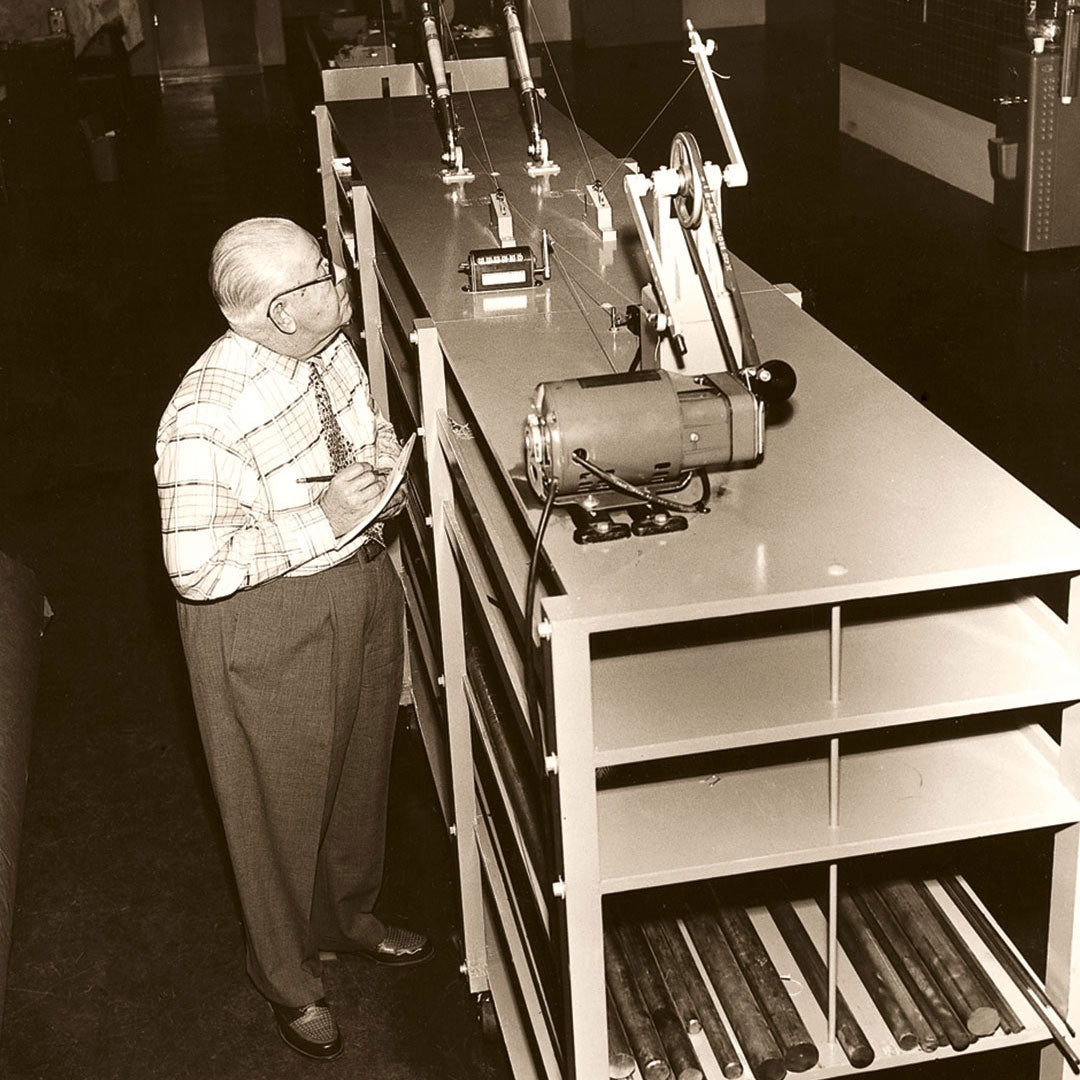
1958: J.C. Axelson Founds the Axelson Fishing Tackle Company (AFTCO)
Axelson Tackle Co. was a large company with over 1,000 employees that manufactured products including aircraft landing gear, tooling for the oil industry, and even the famous Axelson machine lathe. The man who built the company, J.C. Axelson, not only loved the manufacturing process, but fishing as well. As an angler, he could not find roller guides to match his quality standards, so he decided to make his own. After selling his business, he purchased a waterfront home on Lido Island in Newport Beach, California. To indulge his passion for inventing and manufacturing, he built a full-fledged machine shop in the basement, and this is where the AFTCO roller guides were born.
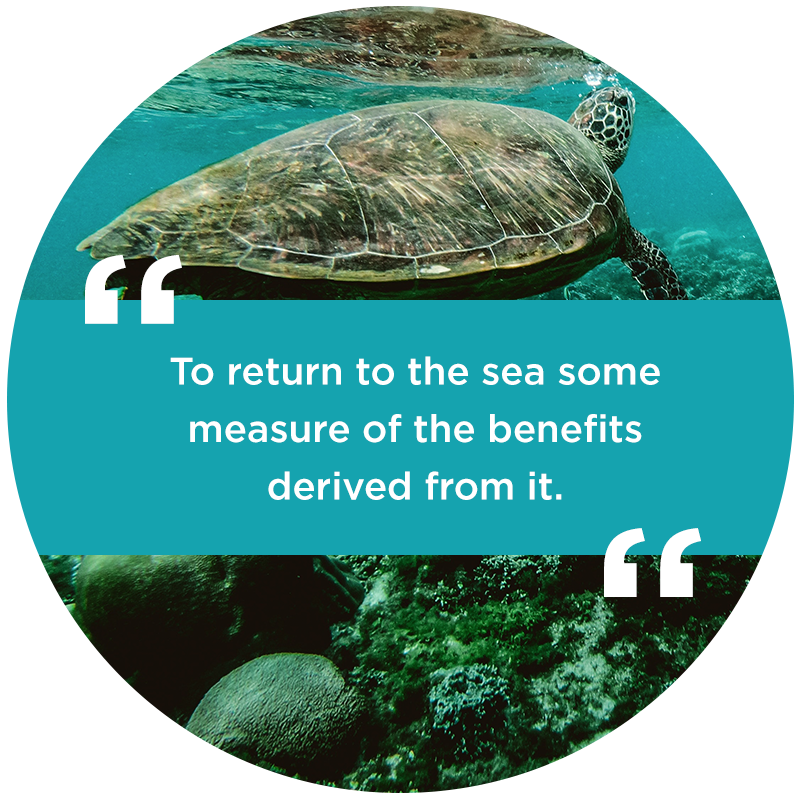
1963: Milt & Peggie Shedd Found the Mission Bay Research Foundation, Later Renamed the Hubbs-Seaworld Research Institute
The Hubbs-Seaworld Research Institute (HSWRI) has become a major marine research center. In the beginning however, it was Milt and Peggie behind the scenes. HSWRI was created to give something back to the marine resource via science and education. It is common in today's world for businesses to focus on ways to contribute to their community. But this was 1963 – a full year before SeaWorld opened and long before concepts like cause marketing, going green, or even simply giving back. Milt Shedd truly was a visionary and his passion for the ocean and the creatures that live there drove that vision. He understood that what the future marine world needed most was for people to better understand its many mysteries.
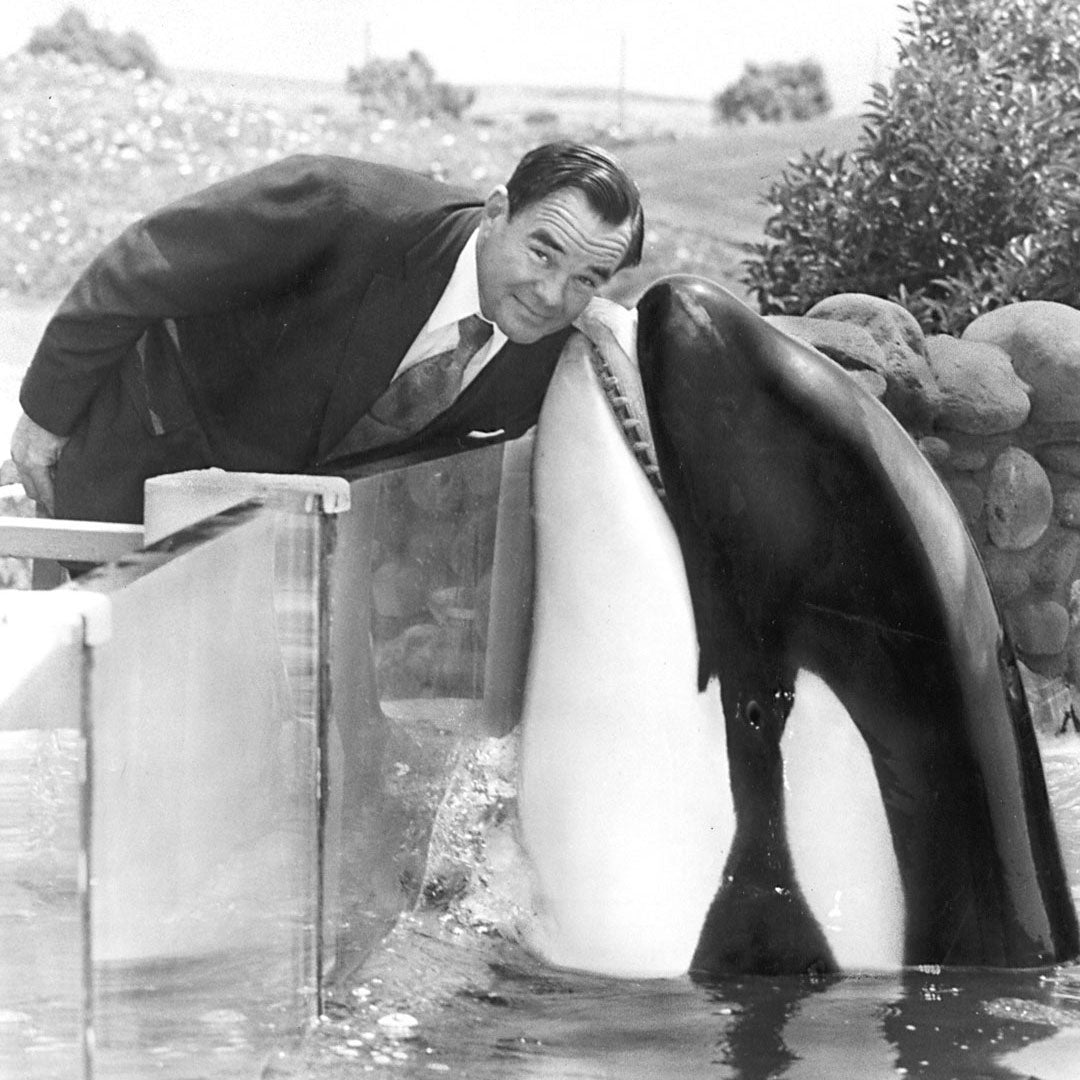
1964: Milt Shedd Co-founds Seaworld and Begins His Position as Chairman of the Board
The idea for SeaWorld is one that switched from a seafood restaurant to an oceanarium. Originally, Milt Shedd and fraternity brother George Millay were going to build and own a seafood restaurant in Long Beach, California. Millay had restaurant management experience and Shedd was an investment banker with experience helping others raise money. Both wanted to own their own business, so they went in together. Their idea was to build a restaurant below sea level so that customers could look out into the harbor and see marine life while they dined. The problem was that the water was often too dirty for people to see anything, and even if it was clear, there might not be much life swimming by. They figured they could find a way to build a partition out of sight so customers would be looking into a controlled tank that looked like the open harbor. If they could do that, they figured why not expand the concept into an oceanarium. Thus, the idea for SeaWorld was born, and shortly thereafter, fellow fraternity brothers Dave De Motte and Dr. Ken Norris joined the partnership. Millay took on the role as President and Shedd became Chairman of the Board of SeaWorld Inc., a position he held until retirement in 1985.
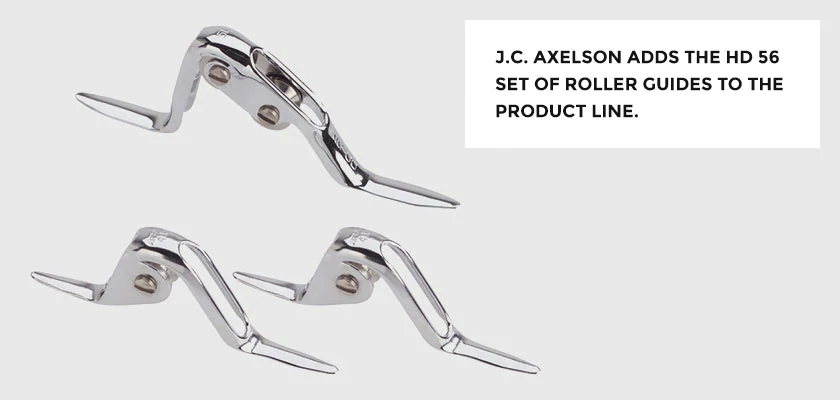
1967: J.C. Axelson Introduces the HD 56 Roller Guides
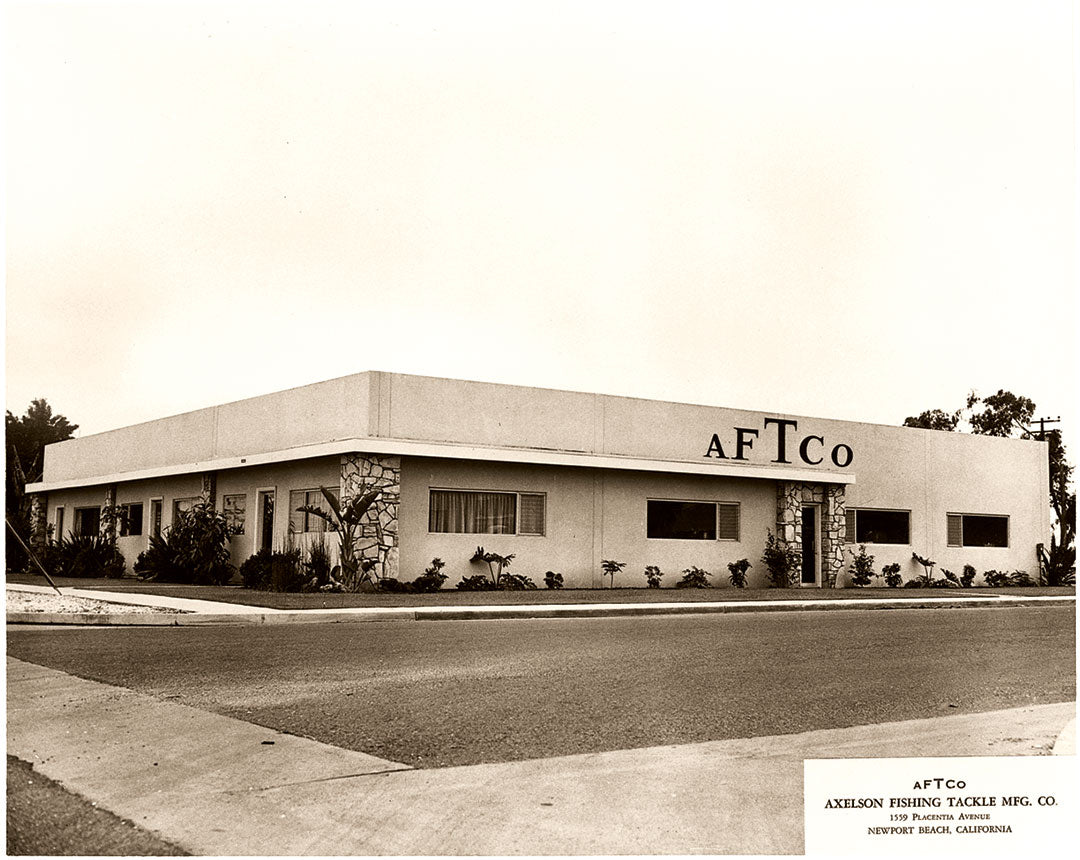
1973: Milt & Peggie Shedd Purchase AFTCO From Mary Axelson, Widow of J.C. Axelson
Milt assumes role as board chairman, and Peggie becomes head of accounting.
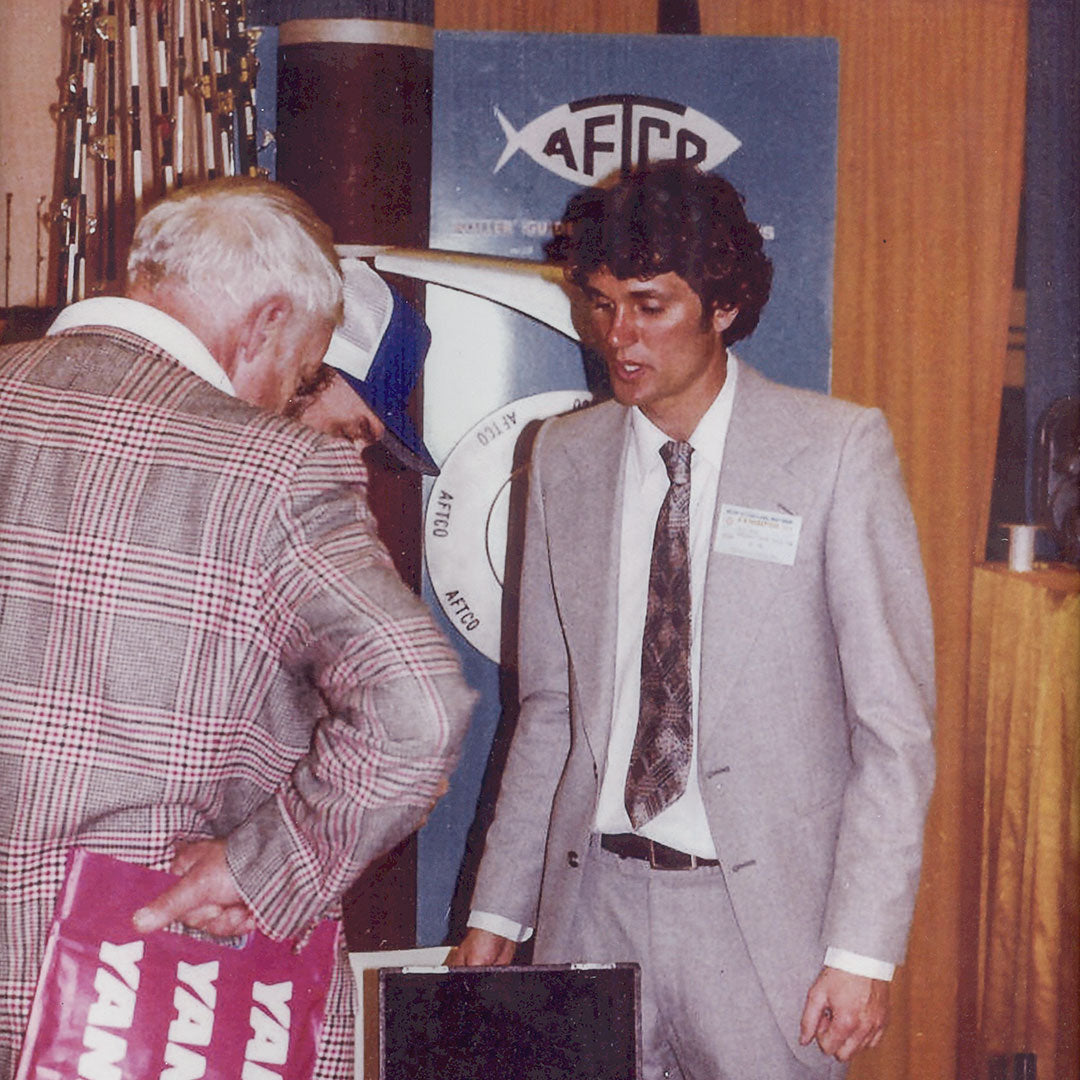
1974
Bill Shedd joins AFTCO as Sales Manager.
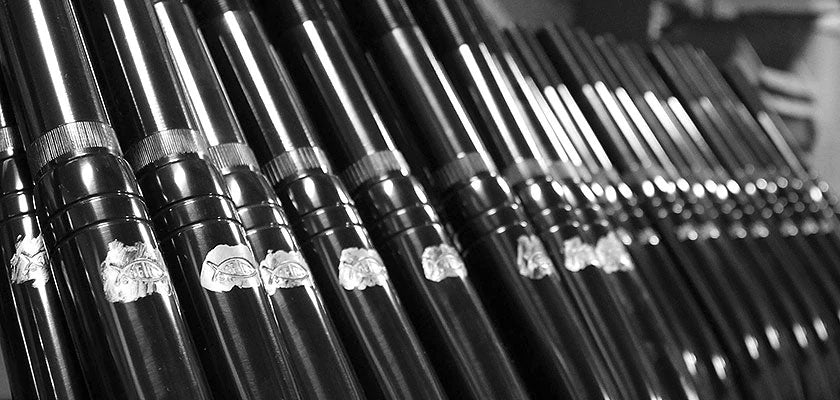
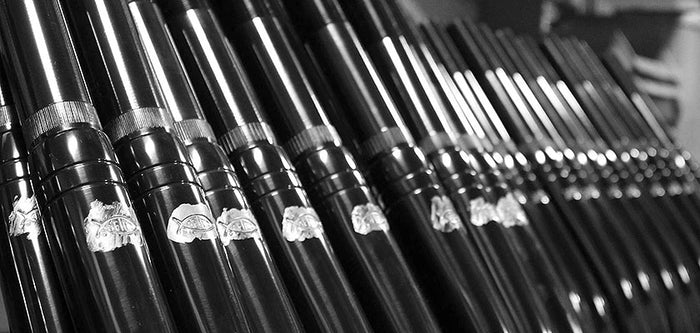
1975
AFTCO Introduces Aluminum Rod Butts
In June of 1974, Bill Shedd drove from Boston to the Florida Keys, visiting east coast customers to learn about their needs. He saw that the supply of aluminum rod butts was inconsistent, and customers often complained about the heavy weight of the butts that were machined from solid bar stock and then drilled. Shedd figured if AFTCO could make them better and provide a consistent supply, they could create a good business. When he returned to AFTCO, he began to look for a manufacturing solution.
While on an offshore fishing trip with his dad Milt, he explained the opportunity, but that he had been unable to find a proper manufacturing solution. Milt suggested that they talk to his friend Jim Easton from the Easton Aluminum Company. As luck would have it, Jim explained that another manufacturer who had begun to work with Easton on aluminum rod butts had just pulled out of the partnership and Easton had several partially completed dies in process. He invited them to come up the next morning and as of 2022, AFTCO butts and Unibutts are still made from JD Easton swaged parts.
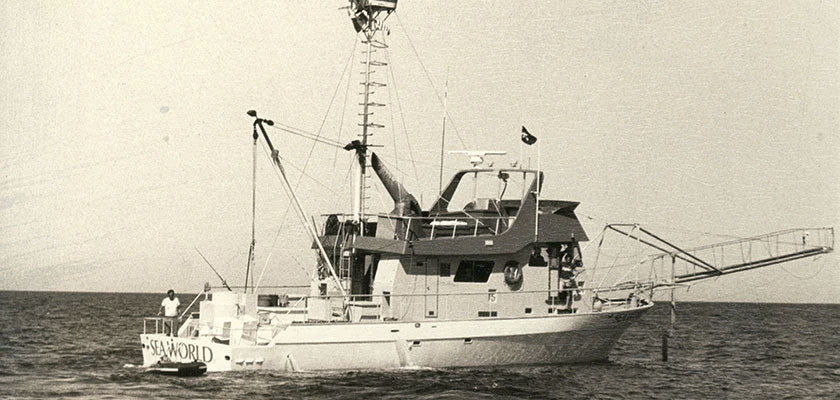
Milt Shedd Builds the 67-Foot Boat "SeaWorld"
Shedd builds SeaWorld to fish swordfish by harpoon, collect specimens and facilitate marine research projects, and most importantly, take family and friends sportfishing.
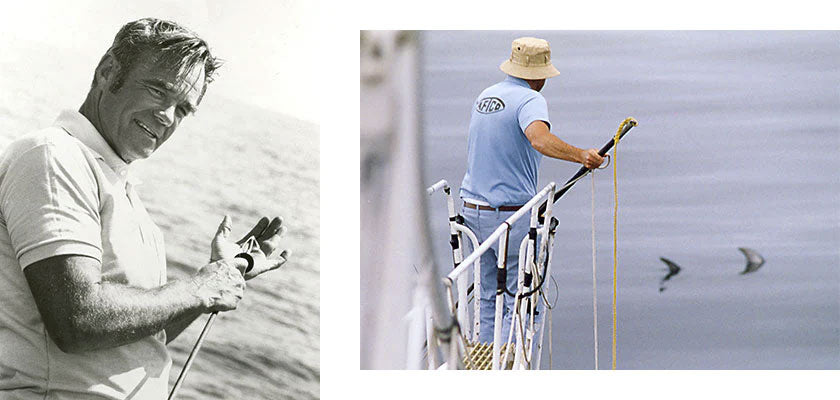
1977: Milt Shedd Organizes First-Ever Sonic Tagging of Broadbill Swordfish With Dr. Frank Carey of Woods Hole
One of the early projects Shedd organized for Hubbs-SeaWorld Research Institute was tagging pelagic fish. In the 1960's, his efforts led to the tagging of several thousand albacore, bluefin tuna, and marlin as well as 30,000 anchovies. He was also one of the first to tag broadbill swordfish with conventional "spaghetti" tags, tagging thirteen free swimmers from the plank of his boat SeaWorld.
Dr. Frank Carey from the Woods Hole Oceanographic Institution was the leading authority on sonic tagging. He had successfully tagged and followed sixteen bluefin tuna and other pelagic game fish, but had been unable to successfully place a sonic tag in a swordfish and wanted to be the first to do so. When Shedd learned of the difficulties Dr. Carey was having, he told him to join Shedd on the SeaWorld in Cabo San Lucas and guaranteed he could successfully place a sonic tag in free swimming swordfish. Dr. Carey took Shedd up on the offer and in the spring of 1977, he joined Shedd in Cabo aboard the SeaWorld. Shedd successfully placed sonic tags in five different swordfish and Dr. Carey was able to gather the data he was looking for.
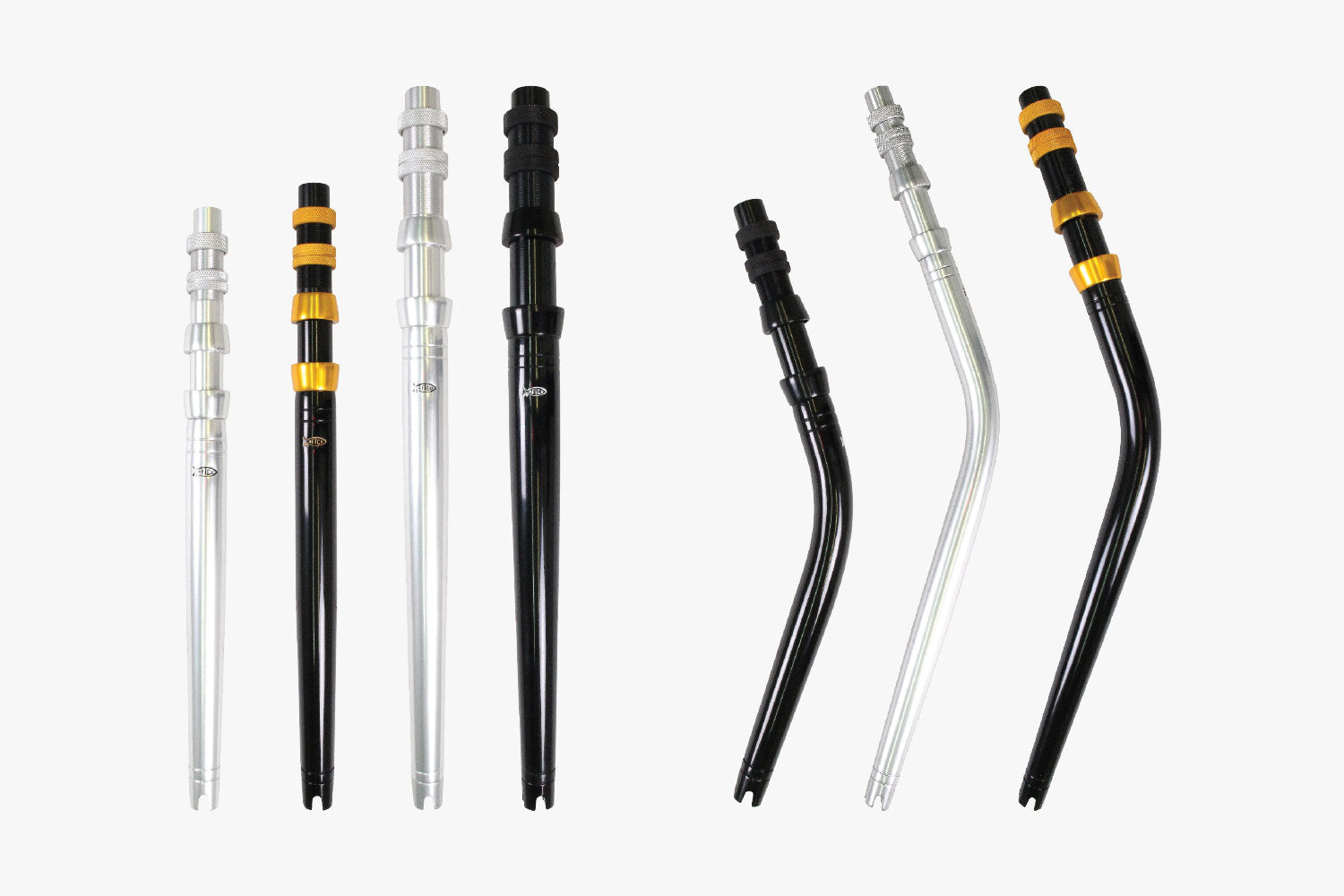
1978: AFTCO Introduces the Unibutt
The AFTCO aluminum rod butts introduced in 1975 were having remarkable success in large part because of the superior strength-to weight advantage of the JD Easton swaging process. One of AFTCO's competitors was Frank Johnson of Mold Craft. Johnson developed what he called the Unibutt — a two-piece aluminum product that replaced the need for the standard brass reel seat. AFTCO had developed and was about to introduce its own product that also replaced the brass reel seat. The main difference being that AFTCO's product was a true one-piece aluminum product, so there would be no chance for the reel seat to turn around the handle. AFTCO had a better design and manufacturing process. Johnson had a better name with his trademarked Unibutt. Both companies had a respect for each other, and neither wanted to fight the other in court over patent issues, so they decided to join forces. Johnson stopped making his product, turned over his Unibutt trademark and patents to AFTCO, and AFTCO paid him a license fee on all Unibutt sales for the remaining years on his patents. The result was the AFTCO Unibutt, a win-win for both parties, and the beginning of a lifelong friendship between the Johnson and Shedd families.
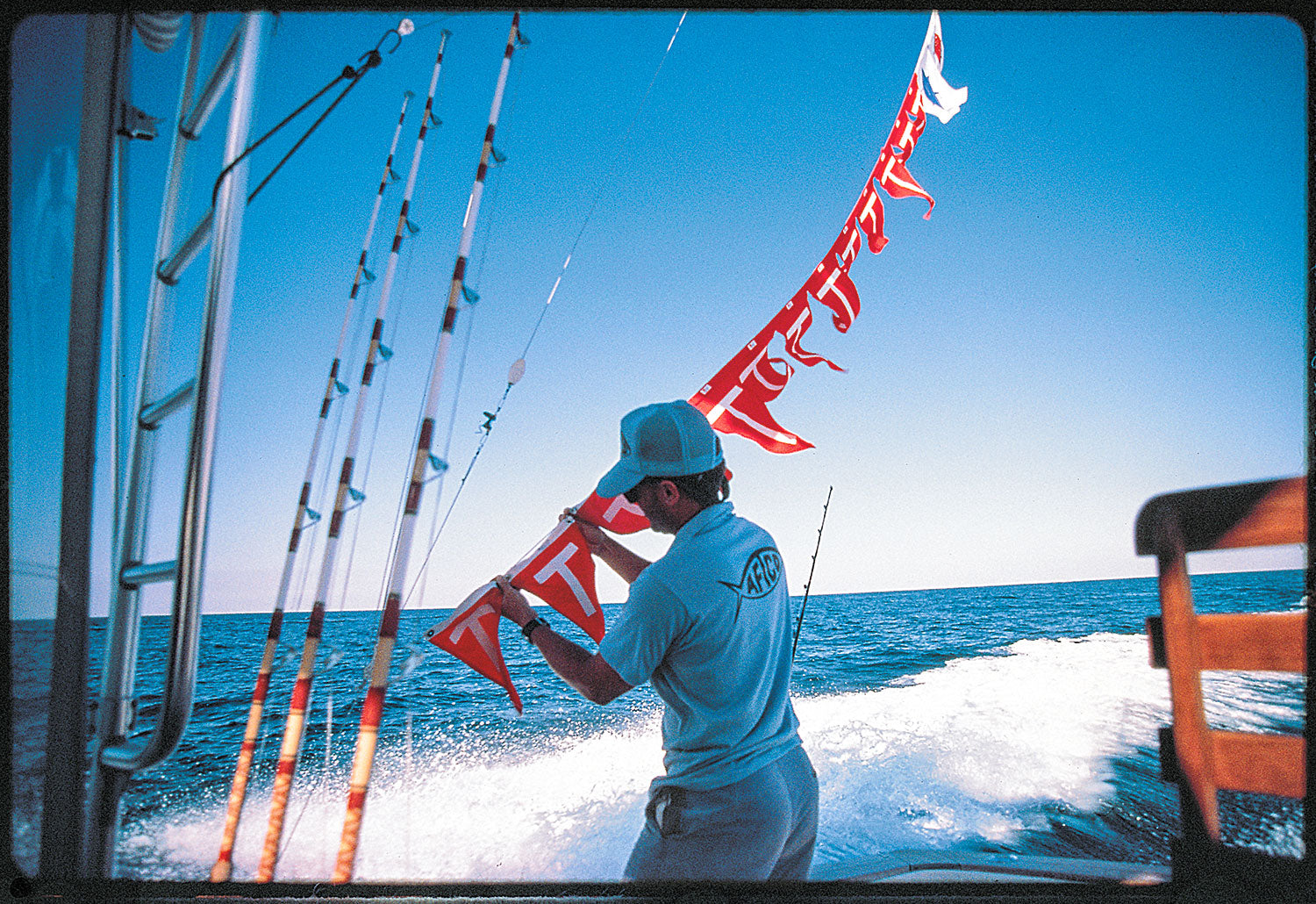
1988: AFTCO "TAG FLAG" Tournament
Greg Stotesbury and Bill Shedd fish with Pete Barrett for tuna out of Manasquan Inlet, N.J. Seeing firsthand the number of boats involved in the northeast tuna fishery inspires Shedd to create the Tag a Tuna for Tomorrow Tournament. That leads to the AFTCO TAG FLAG Tournament, which becomes the world's most successful tagging recognition and awareness program running for the next 18 years.
Seeing the extensive line of boats coming back into the Manasquan inlet after a weekend of tuna fishing was a graphic reminder of how important that fishery was. What might happen to it if commercial fishing pressure caused a fishery collapse as it had in so many other fisheries? On his return home, Shedd began to investigate what data was available on tuna and was surprised to see how little was known about them and how few were being tagged. He decided AFTCO should create a tuna tagging program to help create increased awareness of and participation in tagging tuna. He devised a program to recognize participating anglers, which involved all the major fishing magazines and a system to make tags more available to anglers. The resulting Tag a Tuna for Tomorrow Tournament had a major impact on the number of tuna being tagged in the northeast. It was so successful that Ed Scott, who was head of the NMFS tagging program at the time, called Shedd asking if AFTCO could create an expanded program that could include billfish. Shedd agreed and created the AFTCO TAG FLAG Tournament, which included recognition for both captains and anglers using not only NMFS tags, but TBF tags as well. Read the 2007 Marlin Magazine article here.
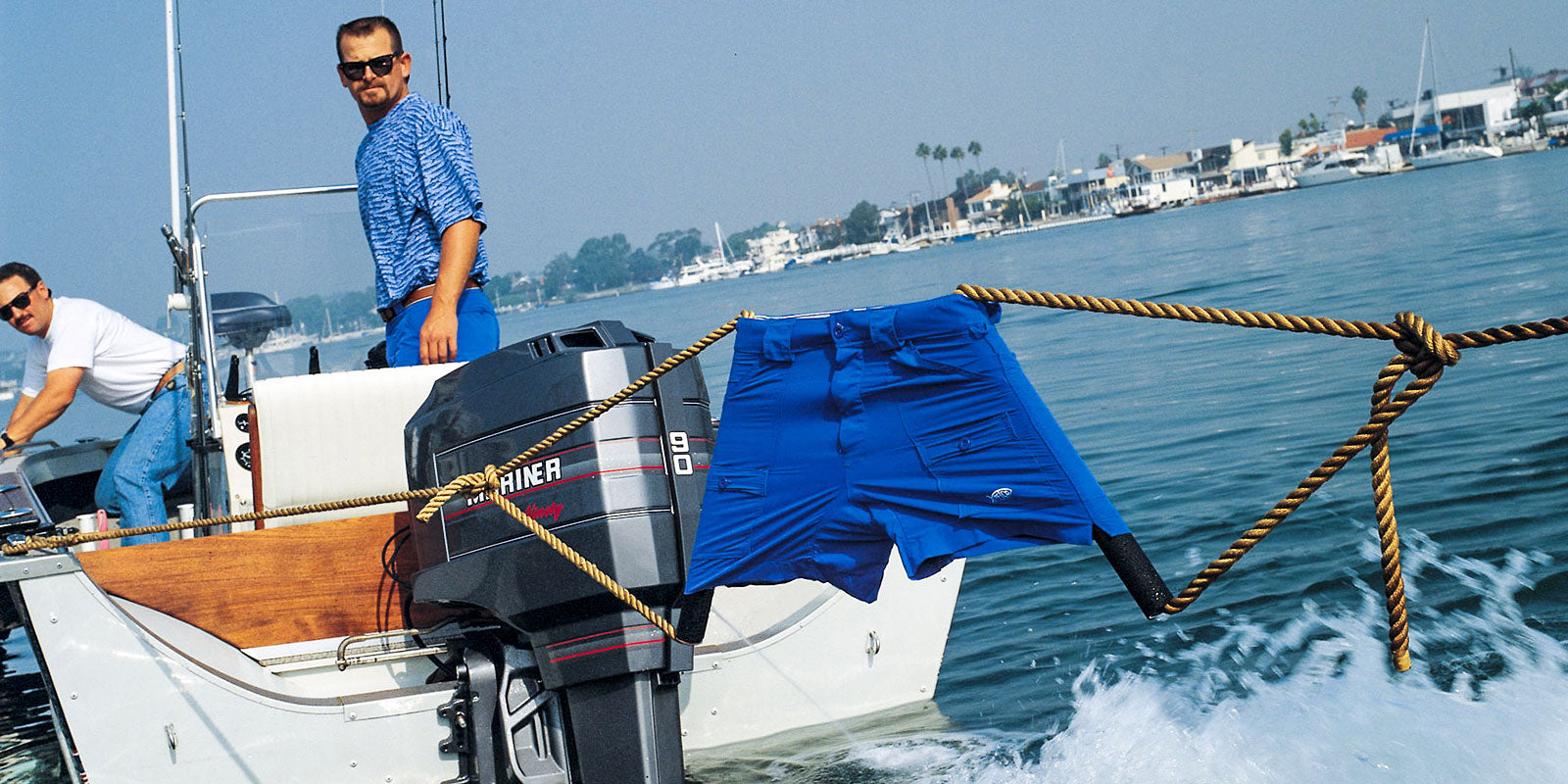

1989
Bill Shedd Starts the AFTCO Clothing Division
During the drive to a father-daughter weekend in the local mountains, Bill Shedd was fielding questions about AFTCO from friend John Snyder. Snyder was the father of the girl sitting in the back seat next to Shedd's two daughters. A successful businessperson and bright guy, Snyder quizzed Shedd on how AFTCO could continue to grow when it already had such a high market share in its main products, roller guides and Unibutts. Shedd named various products to consider, and Snyder kept asking what else AFTCO might consider making. Shedd finally replied that they needed to look at most anything the serious angler uses for saltwater fishing, including the clothes on his back.
While lying in bed that night, Shedd thought about the conversation. AFTCO had never before considered clothing, but the more Shedd thought and prayed that night, it became clear to him that sports like surfing, skiing, golf, tennis, and others all had clothing lines that serious participants identified with. Fishing did not. It was time for AFTCO to try and fill that void. By the next morning, AFTCO was ready to enter the clothing business. Its first product,The Original Fishing Short®, remains the world's most famous pair of saltwater fishing shorts.
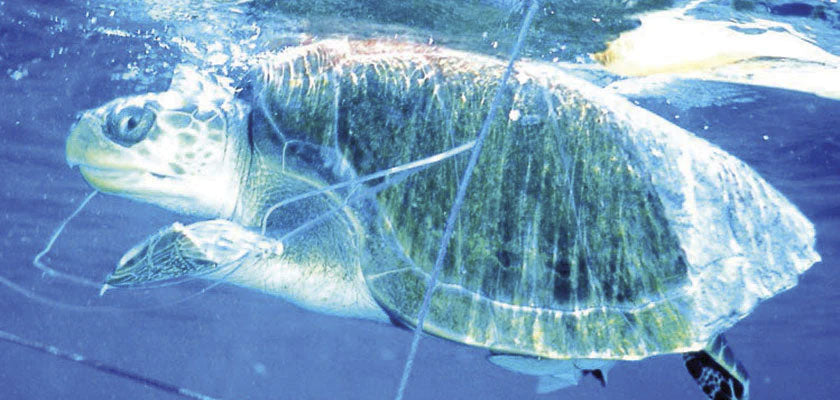
On Behalf of UASC, Greg Stotesbury and Bill Shedd Begin to Lead Successful Effort to Remove Long Lines From California Waters
In 1989 Bill Shedd received a call from a California Department of Fish and Game employee (who will remain unnamed) expressing concern about an experimental shark longline fishery. The person said it was being set up to take the experimental fishery to a full-fledged fishery, and if that did in fact happen, the Southern California mako shark nursery area was in big trouble. The individual said they did not know who else to call and wanted to make sure that Shedd understood that somebody needed to do something or the mako resource was sure to collapse. Shedd decided that AFTCO would take this longline issue on as a company project and would be operated out of the AFTCO offices under the banner and support of UASC. Since Shedd was still in the middle of the gillnet fight, Greg Stotesbury was assigned to head up the effort. Stotesbury knew a lot about the mako fishery as he had spent a great deal of time fishing makos with his dad and brothers. Over the next several years, Stotesbury and other AFTCO staff members spent over 1,000 hours on the effort. The result was that longlines were not allowed to establish in Southern California. The experimental shark longline fishery was defeated, as was a separate AFTCO/UASC effort to develop a conventional longline fishery in California. In other areas of the United States such as the northeast, southeast gulf, and Hawaii, longliners were able to establish themselves. Once in place they are difficult to remove. AFTCO's effort to keep long lines out of California waters early on remains one of our proudest moments in our long history of marine conservation history.
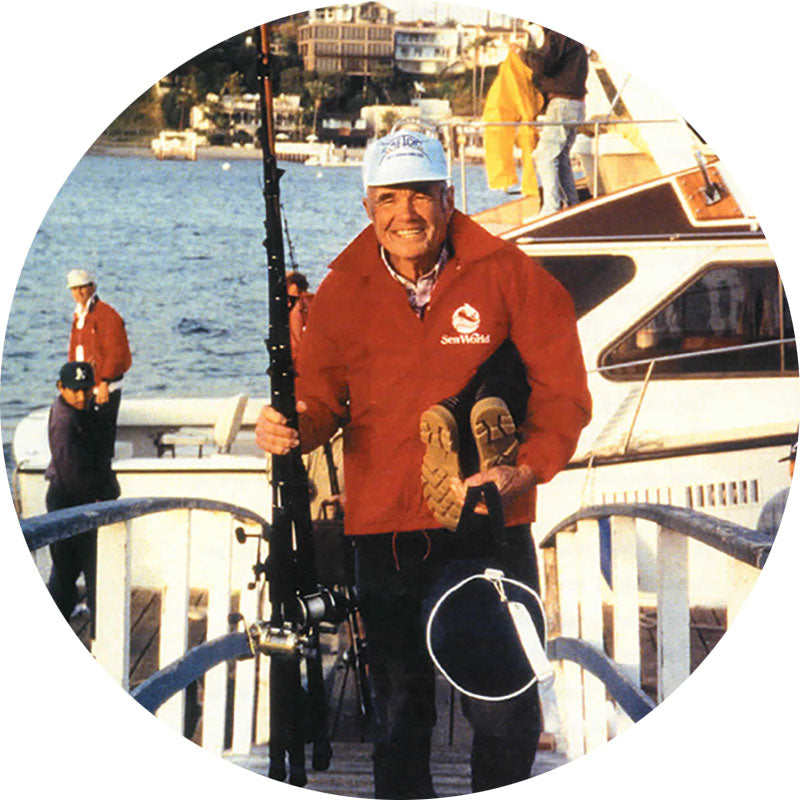
1996: Milt Shedd Helps Found the UCLA Marine Science Center
Toward the end of his life, Milt Shedd combined his lifelong interest to learn about the ocean with his desire to support his alma mater by helping create the UCLA Marine Science Center. Shedd provided direct funding and his 67-foot boat SeaWorld. His signature enthusiastic leadership helped them develop additional funding and a business plan for the effort. Among other things, the UCLA Marine Science Center provides courses for high school teachers to learn about ocean issues so they can better educate their students. This was a fitting effort for Shedd and his longtime belief that the best way to ensure a healthy ocean in the future is to educate the people who are here today.
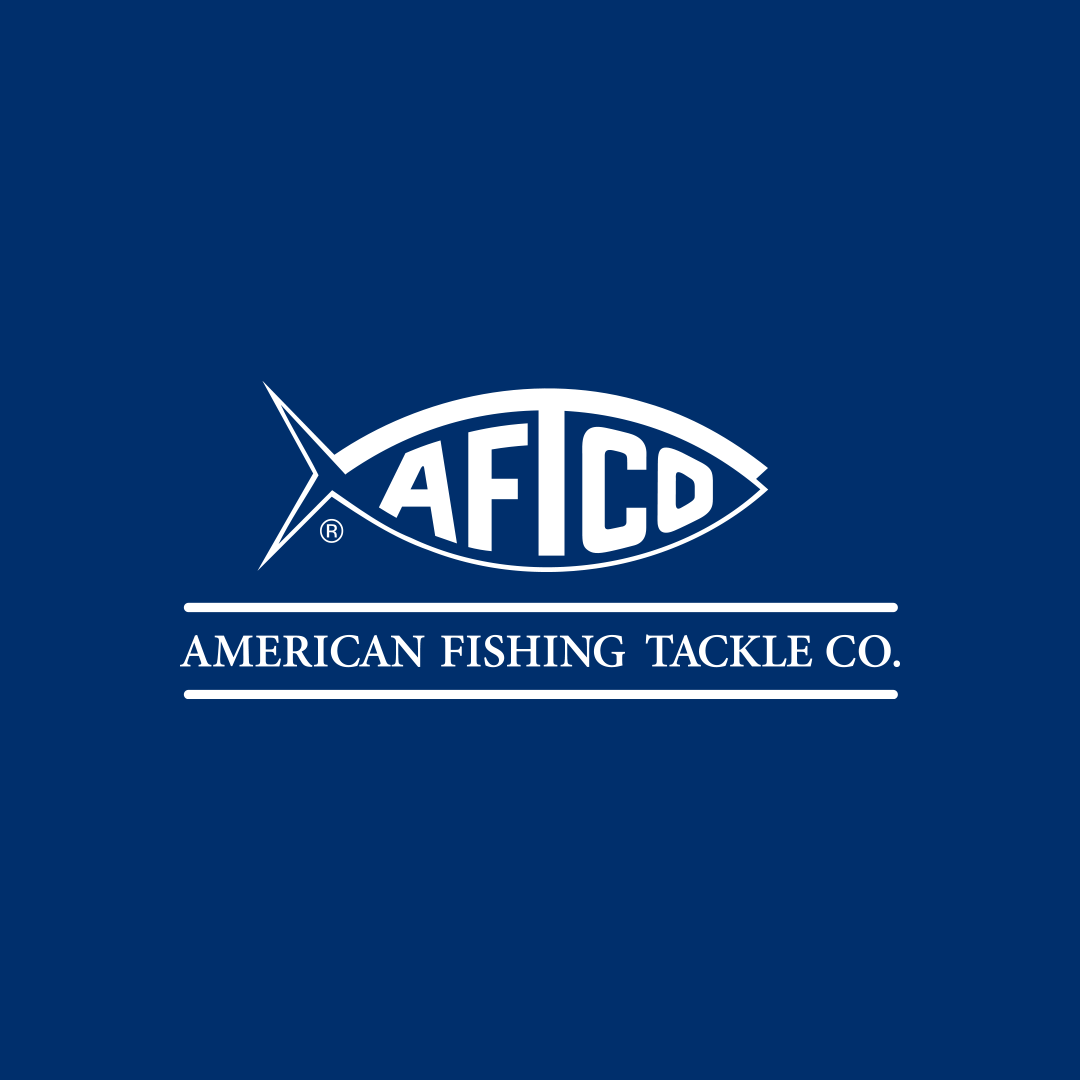
2000: AFTCO Officially Stands for the American Fishing Tackle Company
When J.C. Axelson started AFTCO in 1958, the acronym stood for the Axelson Fishing Tackle Company. Because the full name was too long, AFTCO was stamped on products, and over the years this is what the company became known as. Over time, people began to assume that AFTCO stood for the American Fishing Tackle Company and referred to it that way in magazine articles, correspondence back to the company, and in general conversation. Rather than fight this natural progression, AFTCO embraced it and officially registered the American Fishing Tackle Company with the United States Patent and Trademark Office.
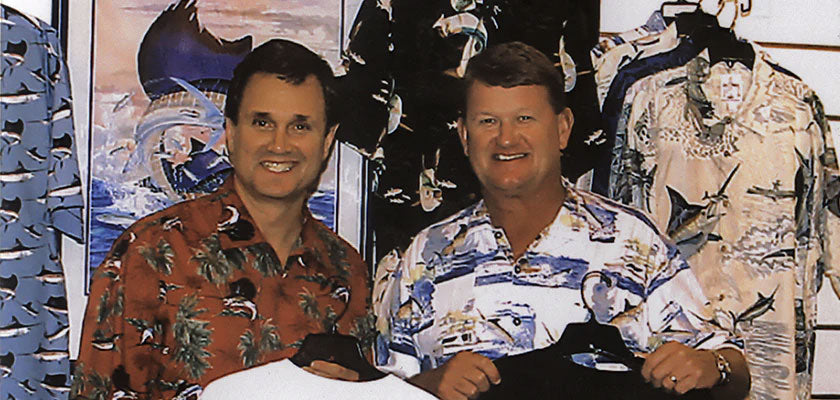
2004: AFTCO Becomes Licensee for Guy Harvey Sportswear
In 2004, AFTCO took over the apparel license for Guy Harvey sportswear and t-shirts. Over the life of our relationship, the sale of Guy Harvey by AFTCO products generated $3,263,150 of funding for the Guy Harvey Ocean Foundation. AFTCO's contract with Guy Harvey formally ended on 6/30/2019. At the time of announcement, the partnership had seen a 400% increase in sales since 2004.
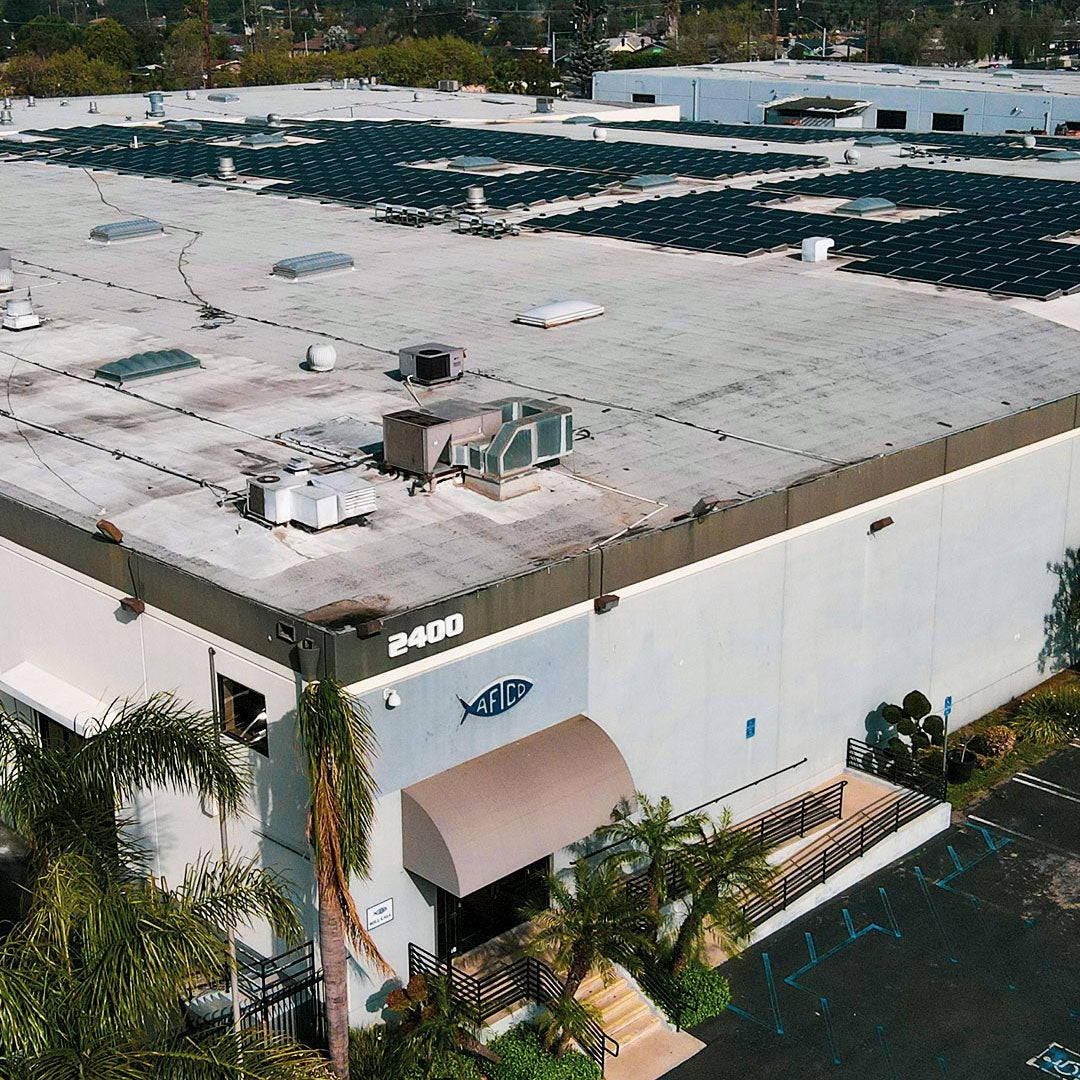
2011: AFTCO Moves to Santa Ana
Bill and Jill Shedd, along with their four children, purchase a 117,000 square foot building in Santa Ana, California to consolidate AFTCO's operations from five separate buildings into one. The move is slated for April 2012.
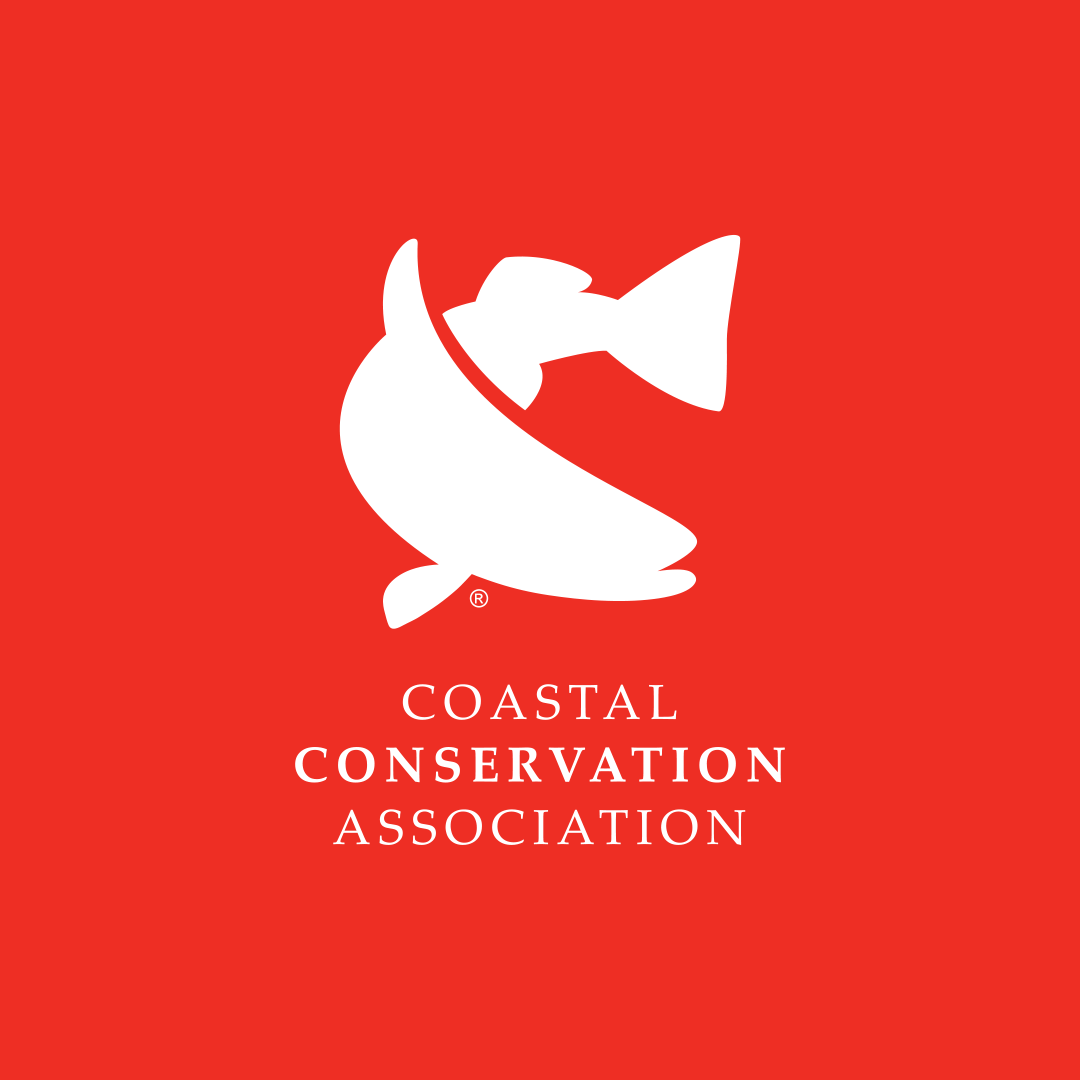
2014: AFTCO Helps Develop CCA of California
In 2014, leaders of the Southern California sportfishing community met at AFTCO to discuss the development of an organization to represent the interests of anglers in California. That meeting and the meetings that followed led to the creation of CCA CAL, and Bill Shedd was elected as Chairman of the Board.
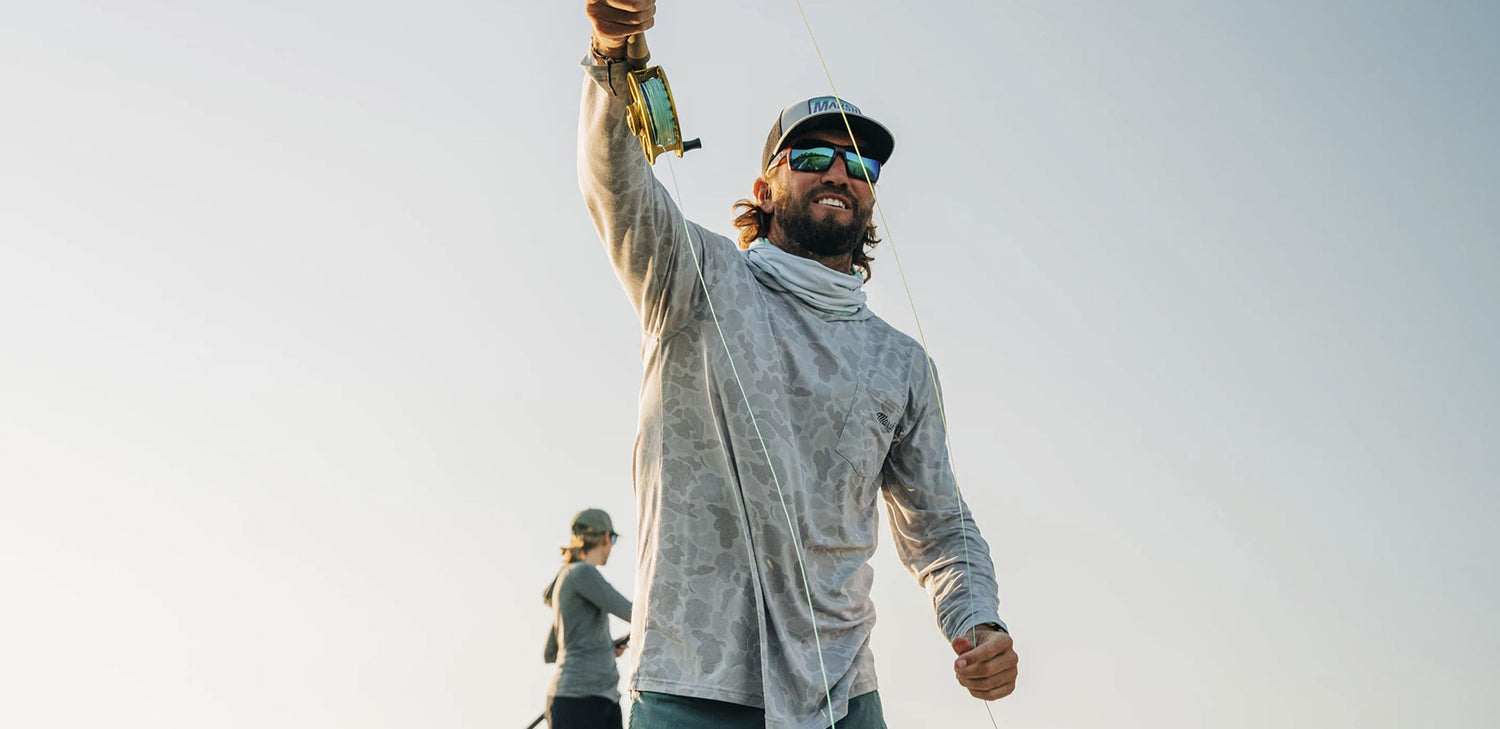
2017: AFTCO Purchases Marsh Wear Clothing
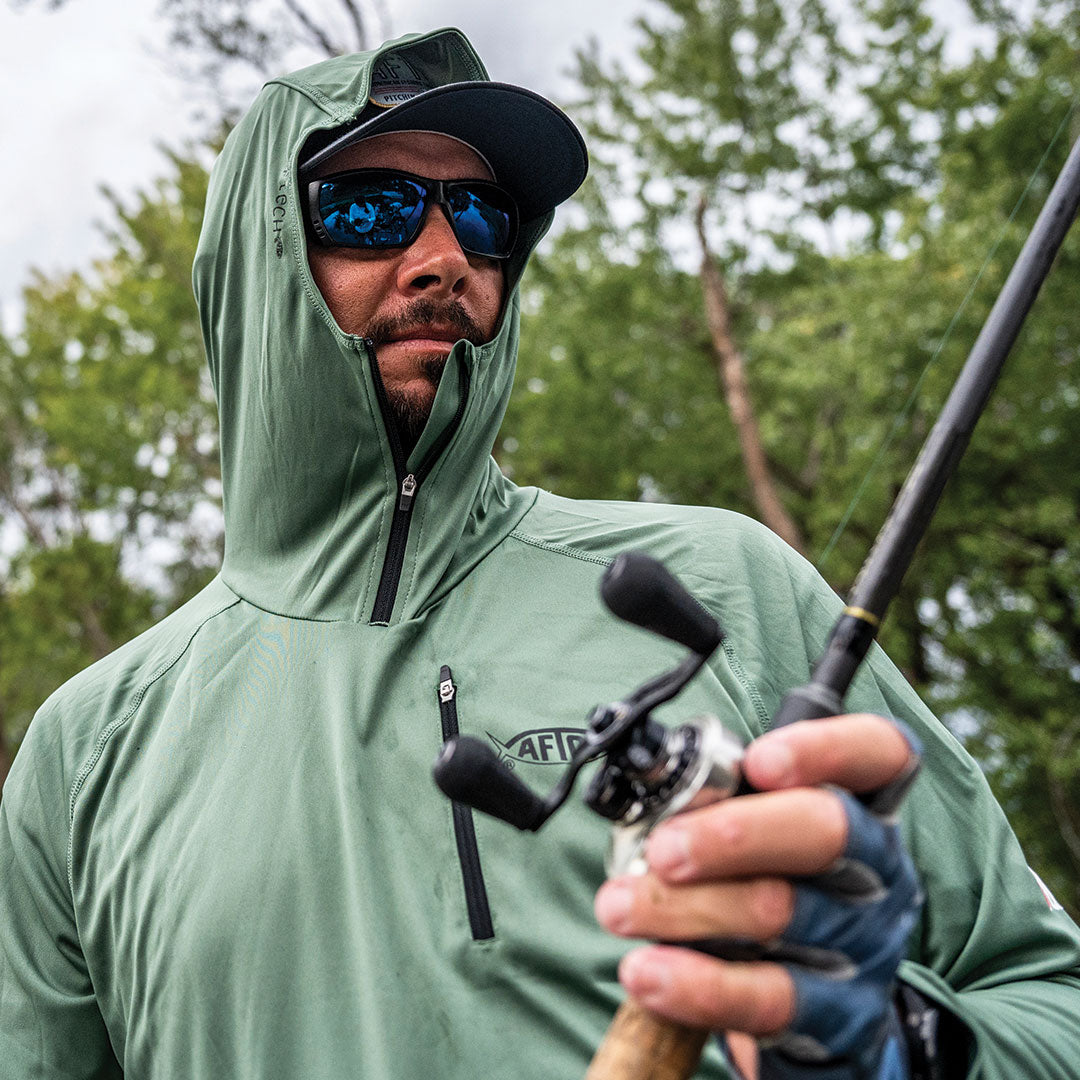
2018: AFTCO Enters Freshwater Fishing Market
AFTCO launches full steam into bass fishing, winning Best of Category Awards at the ICAST New Product Showcase. Spearheaded by Casey Shedd, the new focus includes freshwater fishing conservation programs and products developed specifically for freshwater anglers.
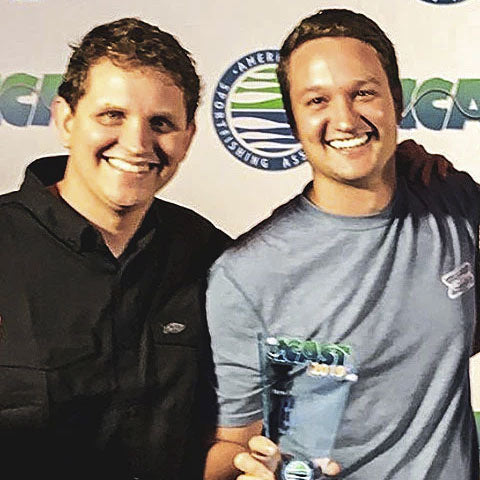
2019: AFTCO Enters Third Generation of Shedd Family Leadership
Casey Shedd is named President, Cody Shedd is named VP of Finance and General Manager, and Bill Shedd remains Chairman of the Board.
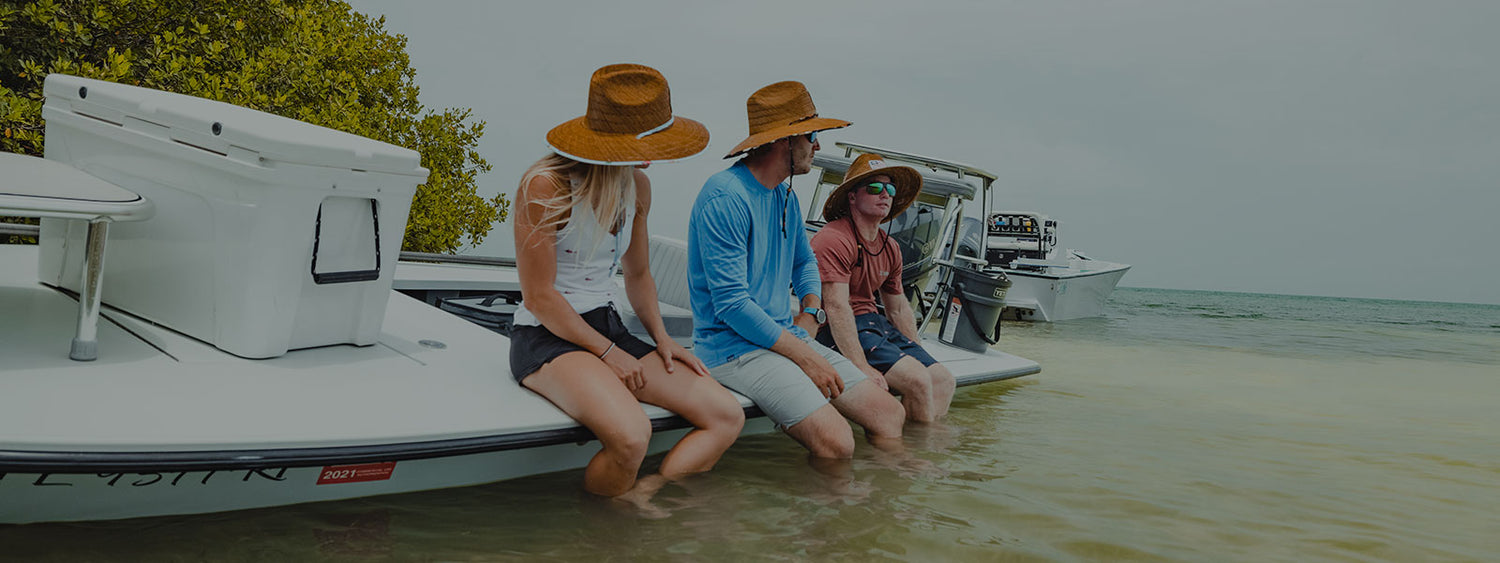
2021: AFTCO Commits to Sustainability
We are committed to reducing our operational and environmental impacts on the oceans, rivers, lakes, and land. This means integrating sustainability into our manufacturing processes, products, packaging, and day-to-day operations.
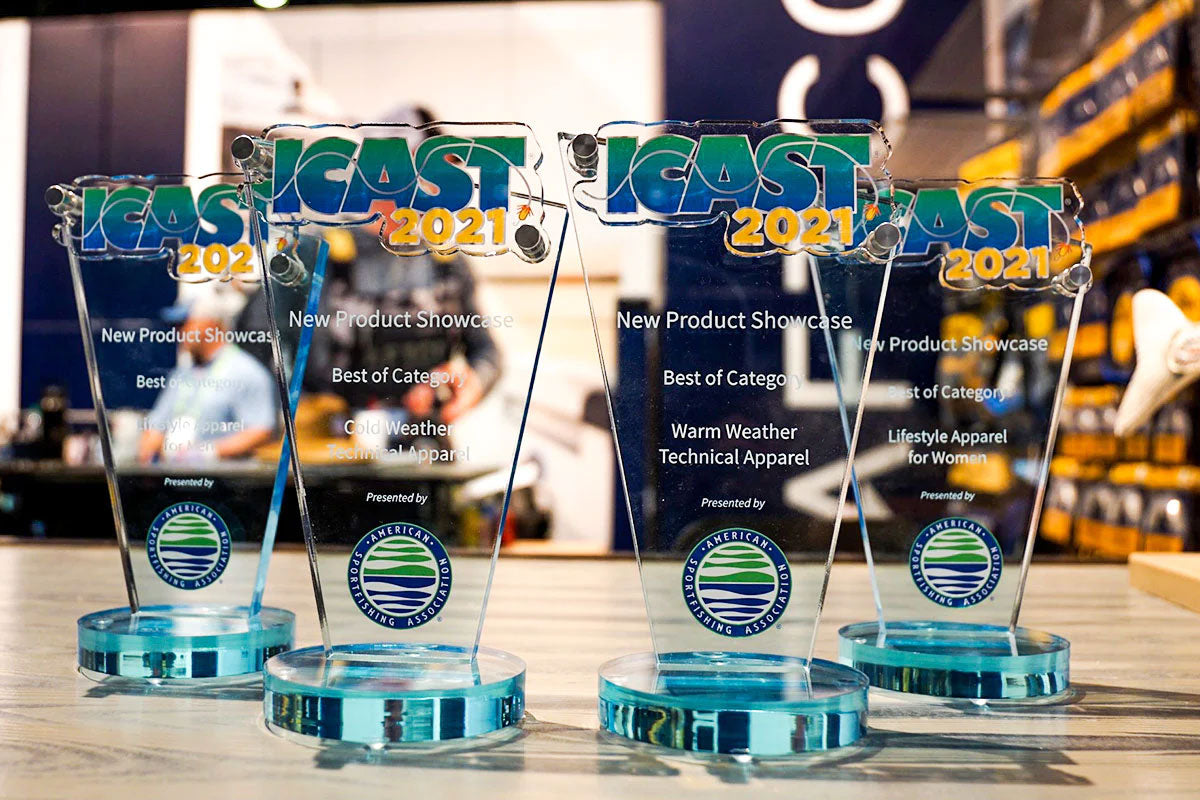
AFTCO Sweeps ICAST Apparel Categories
AFTCO wins Best of Category awards in all four apparel categories at the 2021 ICAST New Product Showcase.
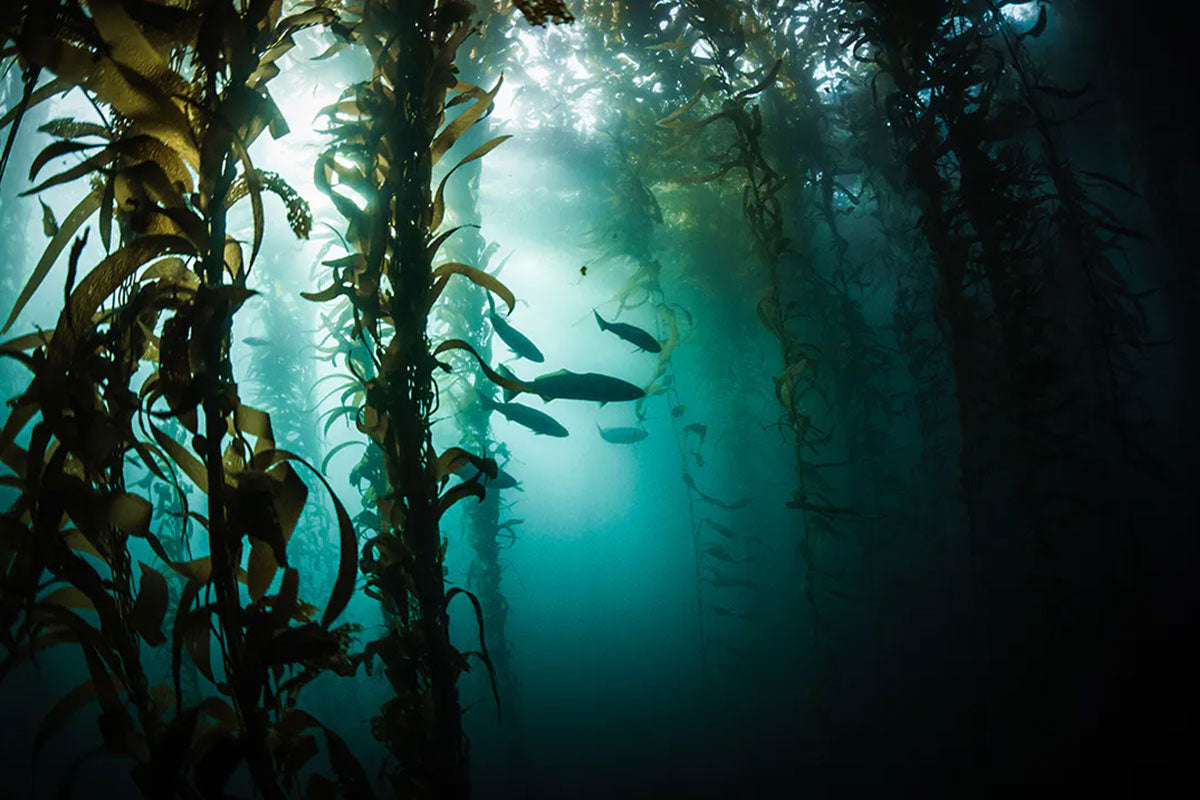
2022: California’s White Seabass Hatchery Shares Groundbreaking Preliminary Results From Genetic Study
Early findings show that the hatchery's contribution to the once-depleted white seabass population is likely to be far greater than previously understood.
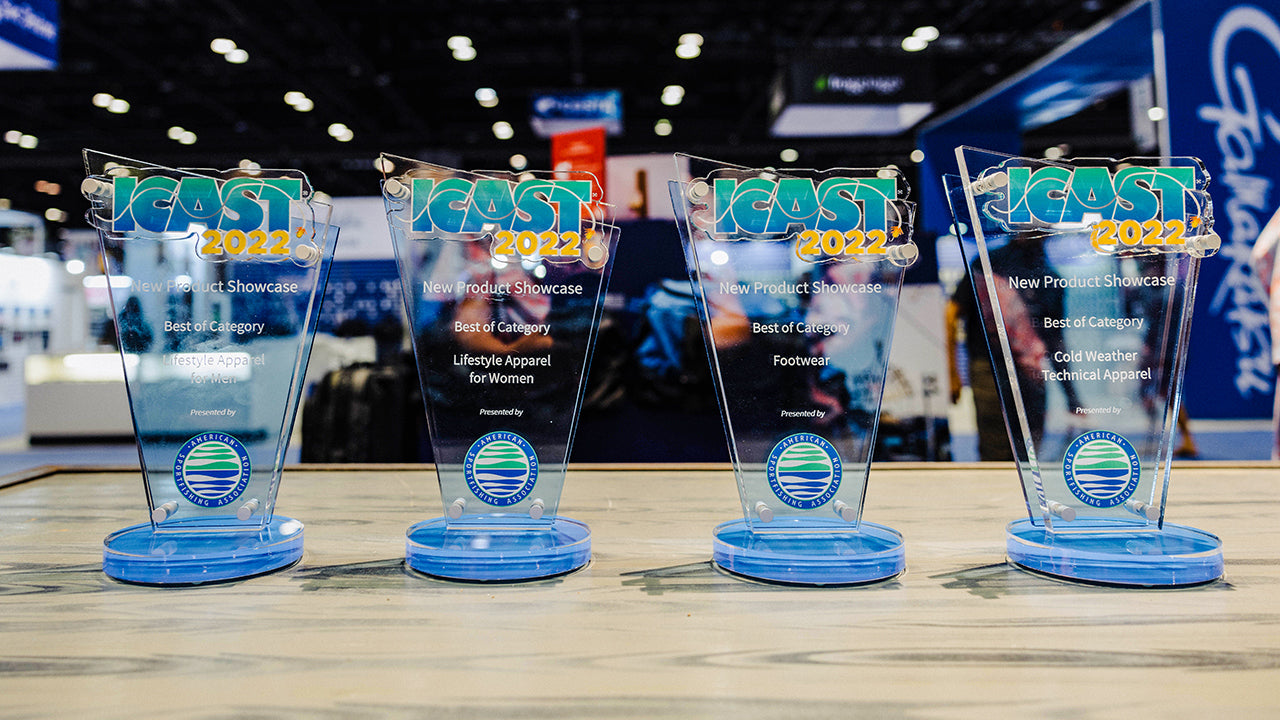
History ICAST 2022
AFTCO Wins Big at ICAST 2022
We are no strangers to best-in-category products, and 2022 is no different, having added four new product showcase awards to our repertoire. This year we won awards in Cold Weather Technical Apparel, Men's Lifestyle Apparel, Women’s Lifestyle Apparel, and Footwear — an all-new category for AFTCO. We also brought sustainability to the ICAST show floor with a 50-foot long by 30-foot wide booth made entirely from recycled cardboard. Learn more about our award-winning products and be sure to check out our sustainable booth.



